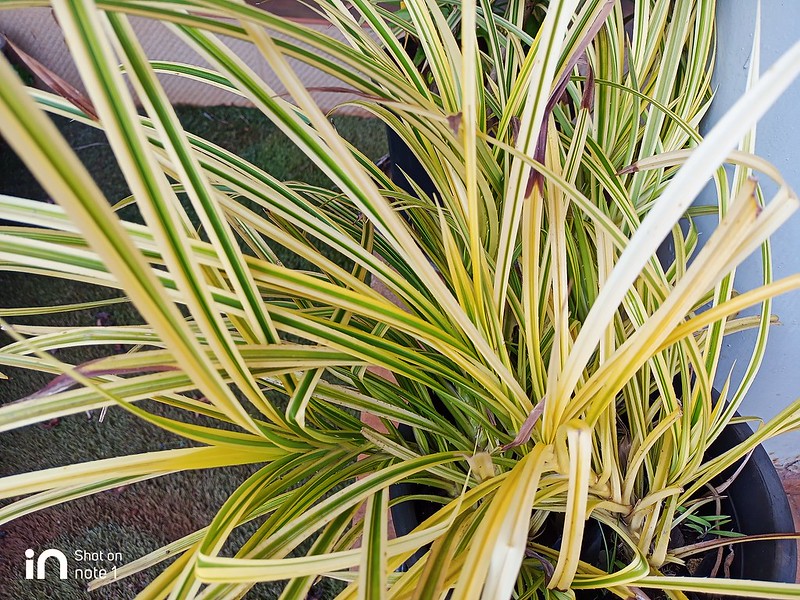- The Micromax In Note 1 is powered by a MediaTek Helio G85 SoC.
- The smartphone runs on stock Android 10 OS.
- It does not come pre-installed with any bloatware apps or UI ads.
India’s homegrown brand Micromax was the country’s leading mobile phone vendor in Q2 2014. But just as the competition got fierce with the entry of Chinese brands like Xiaomi, OPPO and vivo, Micromax lost its ground. While it continued to launch smartphones and feature phones, its market share kept on shrinking. Now, after a couple of years of hiatus, the company is back with two new smartphones – the Micromax In Note 1 and In 1b. Micromax has a new strategy this time, with which it aims to gain back some market share from the Chinese smartphone rivals.
We had a chance to try out the In Note 1 for a few weeks, and it is good. From display to cameras, battery life and software, there is a lot to talk about in the new Micromax smartphone. But though the In Note 1 marks a noteworthy comeback for the company, it still has a lot to prove in front of the competition.
Pricing and Strategy: Banking on Stock Android and Anti-China Sentiments
The In Note 1 is offered in two SKUs – 64GB storage variant at $140 and the 128GB one at $170. The crowded segment at this price point sees some fierce and aggressive competition. While Xiaomi and realme have been fighting hard in the online space, OPPO, vivo and Samsung are strong in the offline space. So, the channel strategy to attract customers will play an important role in Micromax’s success.
Besides COVID-19, the escalation of border tensions between Indian and Chinese troops has resulted in anti-China sentiments among buyers. Banking on these sentiments, Micromax and other Indian brands see this as an opportune time to make a comeback. Users of Chinese smartphones have been complaining about ads within the UI, bloatware, and more. Micromax has opted for a stock Android OS to address these concerns.
Commenting on Micromax’s strategy, Research Director Tarun Pathak said, “Micromax has returned to the Indian smartphone market with its IN Note 1 and IN 1b models. Both models have received positive feedback from the consumers. In Q4 2020, Micromax reached its highest market share in the last six quarters. One of the key features responsible for this positive response has been the stock Android software with minor customizations and no bloatware or pre-installed apps.”
“Micromax has focused on the millennial and young consumers as these models are powered by MediaTek G-series chipsets with a focus on gaming. Also, the IN Note 1 has a Full-HD+ display and comes at $150 (INR 10,999), one of the lowest priced smartphones in this price band. The company is promoting its “Made in India” push to revive its brand name among consumers and expand its market share in India,” Pathak added.

Design: Curved Back, Gradient Design and Hole-Punch Front Camera in Line with Latest Trends
Even though Micromax was in hibernation mode, it does not seem like it was out of sync with the latest trends. As a result, the In Note 1 comes with a curved back and “X” gradient pattern that shines as light falls on it from different angles. While the glossy finish makes the back shine, it is a fingerprint magnet too, and you would often find yourself wiping it to make it look clean.

The gradient back with X pattern gives the In Note 1 a trendy look and feel.
The quad-camera setup with LED flash is on the top left corner, and it has a slight bump too. But this makes the phone wobble a bit when placed on a table with the back facing down. There is also a physical fingerprint scanner in the upper half. The placement is good, allowing fingers to easily reach the sensor. Recognition is fast, and it unlocks the phone within a second.
The power/sleep button and the volume rocker are on the right, and have a good placement, making them easily accessible. On the left, you have a dual SIM card slot along with a dedicated microSD card slot. Below the slot, you also have a dedicated Google Assistant button. The USB Type-C port and 3.5mm jack are at the bottom.
Moving on, the front is dominated by a 6.67-inch Full HD+ IPS LCD screen. Very few smartphones at this price point offer a full HD panel. It is interesting to see Micromax going aggressive with specifications, trying to squeeze in the maximum that it can offer to take on the competition. The screen has decent viewing angles, color reproduction is good, and it gets bright enough under direct sunlight to offer good legibility.

There is also a “Night Light” mode that adds a yellow tint to the screen. It is a blue light filter that reduces strain on your eyes. There are a couple of display modes in the Settings too, letting you adjust the display’s punchiness as per your liking.

The In Note 1 has thin bezels on the sides and top. There is also a hole-punch cutout at the top center which houses the front camera for selfies and video calling. It is good to see Micromax keeping up with the trend.
Overall, the In Note 1 comes with a good design, and the build quality feels sturdy too.
Software and Performance: Dependable, With a Lot of Room for Improvement
One of the key highlights of the In Note 1 is the stock Android 10 OS with some slight customizations. Now, offering a stock Android phone is just not enough. The software must be optimized to go well with the hardware. Offering timely security updates and version upgrades are important as well.

In a recent study conducted by Counterpoint Research, Nokia was the leading smartphone maker in offering timely updates, followed by OnePlus, realme, Samsung, and others. Another interesting thing that came out of the study was that most brands offer security updates to their portfolio every quarter. The same goes with the In Note 1 too. This smartphone was launched in November 2020, but even now at the beginning of February 2021, it still runs on the November 2020 security patch. There is no word on the Android 11 update timeline either.
Micromax needs to make efforts in offering timely updates to get an edge over the competition.
Overall, the performance is decent, but the Android software has some bugs that Micromax needs to iron out. The initial build had multi-touch issues, which were addressed with a hotfix software update. But there are still some minor bugs that I found. For instance, when using the front camera in low light, the screen should light up at full brightness to mimic the flashlight effect. Instead, it lights up at the brightness level that has been set. Though very rarely, the apps do crash on startup, requiring a phone restart to fix the issue. As I mentioned, it happens rarely, especially when you do not restart the phone in 3-4 days.

Day-to-day performance is good for casual users. With a 12nm MediaTek Helio G85 SoC and 4GB of RAM, the smartphone functions smoothly, even when a few apps are running in the background. Games like Asphalt 9: Legends run well on medium settings without any visible frame drops. But with visual settings set to high, occasional lags and frame drops are quite noticeable. The back of the device gets slightly warm when playing continuously for over 25 minutes. But it does not get to a level where you feel uncomfortable holding the device.
Knowing the needs of users, Micromax has added a massive 5,000mAh battery, along with support for 18W fast-charging. It is quick in charging over 50% of the battery in just an hour, whereas a full charge takes a little over two hours. I did notice some issues in charging, where sometimes it charged quickly while on other times it took time. You need to monitor it a few minutes after connecting the charger. If it is not charging fast, you must unplug, restart and charge again. I tried charging with a different fast charger too, but the slow charging situation continued until I restarted the phone.
In terms of battery life, the phone easily lasts for a day and a half on moderate use without any issues. Even with heavy-duty usage, you should be able to cut through the day, with some charge left before it needs plugging in.
Battery life on the In Note 1 is good, but the charging issues can be annoying at times.
Cameras: Decent, But Need a Lot of Fine-tuning
With the In Note 1, Micromax is offering a quad-camera setup at the back. This includes a 48MP main camera sensor, followed by a 5MP ultrawide angle lens, 2MP macro, and a 2MP depth sensor. There is also a 16MP camera on the front for selfies and video calling.

Now, the way most high-res cameras work is that they use pixel-binning techniques where adjacent pixels are combined into bigger pixels to offer low-noise, bright and crisp images. In the case of Micromax, the camera defaults to 48MP, and all photos you click from the main camera are in high resolution. Depending on the details captured, it takes around 9MB to 15MB of storage space.
Talking about the quality, the daylight shots look bright, detailed and vivid. The sensor can capture good colors on the subject, like trees, flowers and vehicles. However, when clicking photos of mountains or scenery, the dynamic range is not that good and consistent. Fine-tuning the software and AI could probably fix these issues to a good extent. Macro shots are good too, offering enough details and shallow depth of field. The only problem here is the resolution takes a hit. Below are some sample shots.
Photos taken in bright outdoor conditions look pretty good.
Low-light photos are above average. But noise is slightly visible. There is a night mode too, but there is hardly any visible difference between the default and night modes. Micromax can fine-tune this and make some improvements. Below is a sample shot.
Moving to the portrait mode, the edge detection is decent, despite having a 2MP sensor for depth measurement. It works well on both humans and other subjects. You may not get the best portrait shots, but for the price band in which the In Note 1 is competing, the quality seems good enough.
The 5MP ultrawide angle lens slightly disappoints with its performance. First, it suffers due to lower resolution, and then there is no consistency when switching between the wide and ultrawide lenses. At times, the ultrawide camera adds a yellow tint to the photos.
Finally, talking about the front camera, it captures above average selfies in bright outdoor conditions. The skin tone and details are not as good but passable. The portrait mode too has decent edge detection, but some fine-tuning can make the quality slightly better.
Conclusion: A Decent Smartphone That Could be Good With Right Polishing
There are a bunch of things about the Micromax In Note 1 that make it tick. The aggressive pricing and specifications look good on paper, and they do translate into a decent performance. The design is also in line with the latest trends. While the performance is good in day-to-day use, it is not consistent. There were issues with fast-charging, and bugs in the camera software to mention a few.
Having a stock Android OS with no bloatware and those annoying ads is one of the USPs of the smartphone. But that is just the first step. Micromax needs to work on ironing out the issues and deliver timely updates. With the company aiming to get some of its lost market share back, right channel strategy, especially in the offline market, and software support will play a big role in its success.
Also Read: Strategic Reviews and Insights on The Latest Smartphones
- vivo V20 Pro 5G: Impressive Design, Capable Cameras and 5G Make it a Promising Upgrade
- Mi TV 4A Hoizon Edition Review: PatchWall UI Makes Smart TV Smarter
- Google Pixel 4a Review: Compact Camera for Stunning Still Photography
- Samsung Galaxy Note 20 Ultra 5G Review: Pinnacle of Android Flagships
- Vivo X50 Pro: A Camera Disguised as a Smartphone
- Asus ROG Phone 3 Review: Gold Standard for Gaming Smartphones
- Xiaomi Mi Notebook 14 Review: A Solid Performer in Work-From-Home Era
Subscribe to our newsletter











